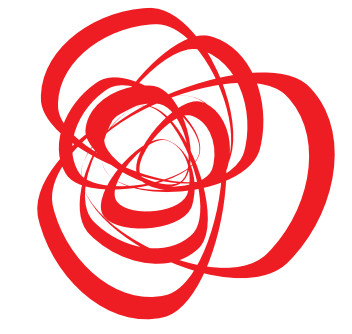FirstMed Insight: How to Conquer Heat-Related Illnesses?
- 8 Jul 2024 9:34 AM

The body typically cools itself by sweating, but in some cases, this is insufficient. In high-humidity circumstances, sweat does not evaporate quickly enough, impeding the body’s ability to release heat rapidly.
When this happens, you may experience lightheadedness, dizziness, and sudden changes in body temperature.
Various other factors can limit the body’s ability to regulate temperature, such as obesity, fever, dehydration, heart disease, mental illness, poor circulation, sunburn, and the use of prescription medication or alcohol.
If the body temperature rises quickly, it may damage the brain or other vital organs.
Recent summers have seen a rise in extremely hot, sunny days. These heatwaves can lead to discomfort or poor health for many people—older adults or babies are high-risk groups.
Continue reading for further details on what to do if the heat attacks. Recognizing signs of heat-related illnesses can prompt swift action to help yourself or a loved one avoid adverse consequences.
Here are the most common heat-related illnesses:
* Heat stroke (or sunstroke)
* Heat exhaustion
* Heat cramps
* Sunburn
* Heat rash
Heat Stroke
Heat stroke (otherwise called sunstroke) is the most severe heat-related illness. It occurs when the body cannot control its temperature: the body temperature rises rapidly, the sweating mechanism fails, and the body cannot cool down.
Heat stroke can cause death or permanent disability if emergency treatment is not provided.
Warning signs of heat stroke:
* An extremely high body temperature (above 39.5°C)
* Red, hot, and dry skin (no sweating)
* Rapid, strong pulse
* Throbbing headache
* Dizziness
* Nausea
* Confusion
* Unconsciousness
What should you do if you see any of these signs?
You may be dealing with a life-threatening emergency. Call 911 for immediate medical assistance and cool the victim:
* Get the person to a shady area.
* Start to cool the victim rapidly with water: immerse in a tub of cool water, place in a cool shower or spray from a garden hose; sponge with cool water; or if the humidity is low, wrap the victim in a cool, wet sheet and fan him or her vigorously.
* Monitor the body temperature and continue cooling efforts until the body temperature drops to 38.3-39°C.
* When the person’s condition is stabilized, get urgent medical care.
Heat Exhaustion
Heat exhaustion is a milder form of heat-related illness that can develop after several days of exposure to high temperatures and inadequate or unbalanced fluid replacement.
Older people, those with high blood pressure, and those who work or exercise in a hot environment are most prone to heat exhaustion.
Look for these signs of heat exhaustion:
* Heavy sweating
* Paleness
* Muscle cramps
* Tiredness
* Weakness
* Dizziness
* Headache
* Nausea or vomiting
* Fainting
The skin may feel cool and moist. The pulse rate will be rapid and weak, and breathing will be fast and shallow. If heat exhaustion is left untreated, it may progress to heat stroke. Seek medical attention if symptoms worsen or last longer than one hour.
Heat Cramps
Heat cramps are muscle pains or spasms – usually in the abdomen, arms, or legs – that may occur in association with strenuous activity. People who sweat a lot during strenuous activity are prone to heat cramps. This sweating depletes the body’s salt and moisture. The low salt level in the muscles causes painful cramps. Heat cramps may also be a symptom of heat exhaustion. If you have heart problems or are on a low-sodium diet, seek medical attention for heat cramps.
If medical attention is not necessary, take the following steps:
* Stop all activities and sit quietly in a cool place.
* Drink clear water (mineral water), juice, or a sports beverage.
* Do not return to strenuous activity for a few hours after the cramps subside because further exertion may lead to heat exhaustion or heat stroke.
* Seek medical attention for heat cramps if they do not subside in 1 hour.
Sunburn
In case of a sunburn, the skin’s temperature gets warmer, it turns red and hurts. If the burn is severe, swelling and sunburn blisters can develop. The symptoms seem like the flu: feverish, chills, nausea, headache, and weakness.
Later, when the skin tries to get rid of sun-damaged cells, it starts peeling and itching.
How to relieve sunburn?
* Move away from sunshine until your sunburn heals.
* Treat the sunburned areas with cool clothes or cold water.
* Apply moisturizer lotion that contains aloe vera on sunburned areas.
* Allow the blisters to heal, and do not break them.
Heat Rash
Heat rash is a skin irritation caused by excessive sweating during hot, humid weather. It can occur at any age but is most common in young children. Heat rash looks like a red cluster of pimples or small blisters.
It is more likely to occur on the neck and upper chest, in the groin, under the breasts, and in elbow creases.
The best treatment for heat rash is to provide a cooler, less humid environment. Keep the affected area dry. Dusting powder may be used to increase comfort.
How to avoid heat-related illnesses in extremely high temperatures?
Remember to keep cool and use common sense. Drink plenty of fluid, replace salts and minerals, wear appropriate clothing and sunscreen, pace yourself, stay cool indoors, schedule outdoor activities carefully, use a buddy system, monitor those at risk, and adjust to the environment.
Contact our medical professionals if you or someone under your care is suffering from the effects of extreme heat.
24-hour telephone assistance: +36 1 224 9090
Source:
FirstMed




























LATEST NEWS IN specials